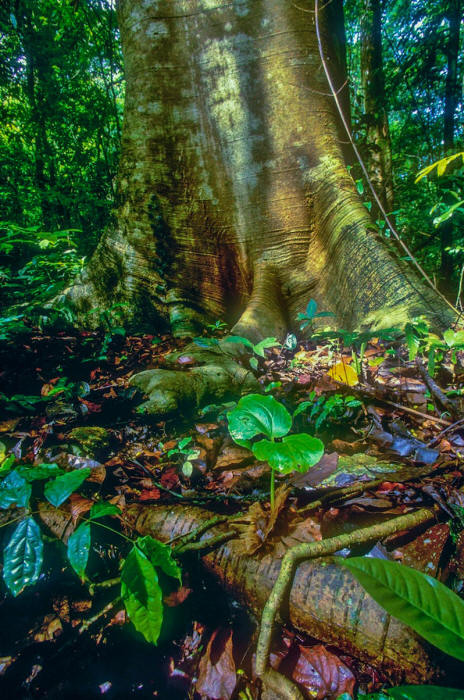|

by Natalie Parletta
April 14,
2020
from
CosmosMagazine Website

Giant long-lived pioneers (Cavanillesia platanifolia)
store
most of the biomass in this tropical forest,
even
though their seedlings rarely survive
and
make it to the canopy.
Credit: Christian Ziegler
Study
points way forward
for rainforest
regeneration
and
management...
When it comes to storing carbon, an increasingly vital function of
rainforests for the health and survival of the planet, all trees are
not the same, according to an analysis (Demographic
Trade-offs predict Tropical Forest Dynamics) published in
the journal Science.
The study suggests those that grow fast, live to ripe old ages and
reproduce slowly account for the bulk of the forest's biomass, at
any age, and far more carbon storage than previously thought.
"People have been
arguing about whether these long-lived pioneers contribute much
to carbon storage over the long term," says senior author
Caroline Farrior from the University of Texas at Austin, US.
"We were surprised to
find that they do."
Tropical rainforests
comprise
dynamic ecosystems with hundreds to
thousands of different tree species.
The complexity of this biodiversity needs to be accounted for when
forecasting global climate in the coming decades, says first author
Nadja Rüger, from the German Centre for Integrative
Biodiversity Research.
Currently, models represent all the trees in a forest as essentially
the same, but the new analysis highlights the flaws in this
approach.
"We show that the
variation in tropical forest species' growth, survival and
reproduction is important for predicting forest carbon storage,"
Farrior says.
The international team
used 40 years of data from 200,000 trees from 282 species collected
from a tropical rainforest
in Panama, one of the most
well-researched tropical rainforests in the world.
Previously, they had identified that trees use different strategies
during their development which could be classified according to two
criteria.
"Pace of life"
distinguishes "fast" species that grow and die quickly from
"slow" species that grow slowly and reach an old age.
But there is a
trade-off; stature and fertility can differ irrespective of the
trees' pace of life.
"Infertile giants" -
known as long-lived pioneers - grow relatively fast but
live a long life, reaching a large stature, and produce few
offspring each year, while "fertile dwarfs" are small shrubs and
treelets that grow slowly but produce abundant offspring.
The researchers plotted
these different strategies in computer models that simulated how
trees grow, die, produce offspring and compete for light as they
would in a real forest.
They then compared this with the observed development of real,
secondary forests regenerating after being cleared for timber or
agriculture.
By simplifying the diversity with their groupings, they were able to
reliably capture the variation in established forests and
demonstrated the need to include both dimensions.
"We discovered that
the nearly 300 unique tree species can be represented in our
computer model by just five functional groups and still produce
accurate forecasts of tree composition and forest biomass over
time," says Farrior.
The data-driven modeling
approach presents a new method to predict the development of
species-rich forests that can save time and resources, Rüger says.
"Basically, we were
able to reduce the forest to its essence, and that was only
possible because we know so much about the tree species in the
forest in Panama," she adds.
Next, the researchers
plan to apply their approach to young, secondary forests and
tropical dry forests with less complete data.
"If this succeeds,"
says Rüger, "it will be much easier than today to scientifically
support renaturation projects and sustainable timber use
in tropical forests, and also, of course, to estimate how
effectively re-growing forests contribute to carbon storage and,
therefore, to climate mitigation."
| 

